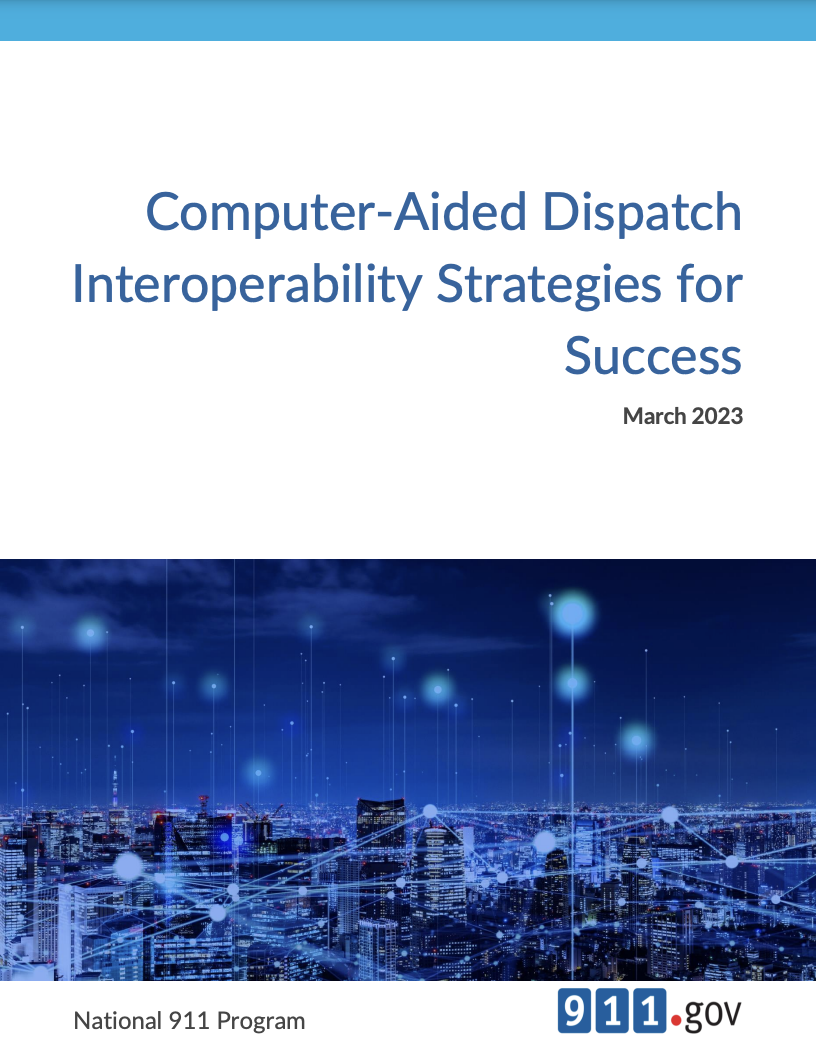A Systems of Systems: Getting CADs to Work Together
The pervasive public safety saying applies to emergency communication technologies too: If you’ve seen one computer-aided dispatch (CAD), you’ve seen one CAD. While there aren’t literally an endless number of different types of dispatch systems, there are enough that enabling them to work with each other will be challenging.
That’s one of the findings of the CAD Interoperability Assessment Project. Launched in fall 2021, the project’s first report, on the current status of CAD interoperability, came out in July 2022. In early 2023, the group of 911 centers and industry stakeholders concluded its work with the release of a final report focused on strategies for success.
Here are some highlights of the project’s work:
Project participants included 911 centers in 11 States and Canada, partner agencies APCO, IJIS, NENA and NASNA, and representatives from 15 industry partners.
The first report explores the root causes of solution providers’ reluctance or inability to advance interoperability and other obstacles, which include:
Funding
A lack of agreed-upon standards
Slow decision-making at ECCs
A wide range of CADs with variable functionality
The project found that ECCs and solution providers (both CAD and non-CAD vendors) are aligned on the challenges listed above, but there’s a lack of agreement on competing priorities among vendors and on the interpretation of what’s required for HIPPA and CJIS compliance. The two groups also don’t agree on the lack of customer demand (ECCs see the demand whereas providers do not) and the fact that operational demands by ECCs vary with every CAD deployment.
The final report identifies strategies to improve interoperability that will enable a “system of systems” for 911. It emphasized that efforts must happen at both the national and local level and includes these recommendations, among others:
Create a national CAD interoperability resource center. This would be a one-stop shop for any CAD interoperability initiatives and include sample documents, charters, governance models and SOPs, as well as technical architecture documents (e.g., network diagrams, data-mapping examples). 911 centers can also find sample RFP language, resource links, educational materials and answers to common questions.
911 Center stakeholders must lead the way to overcome challenges to data interoperability. Part of the grass roots approach, 911 centers “will serve as the central gear in the engine to institute change.” This should include efforts to secure funding, establish governance, procure network connectivity and develop operating procedures, interfaces and data-sharing capabilities. Maintenance and administration will also be handled at the local level.
Establish a national governing body to develop a recognized data standard. The EIDO (Emergency Incident Data Object) standard is still relatively new, but is important to the advancement of the emergency communications industry. A common language is critical for interoperability, for compelling CAD providers to address interoperability requirements and, more generally, for advancing 911.
Measuring success along the way to achieving greater CAD interoperability will, of course, also be essential. This report also includes detailed perspectives from CAD and non-CAD vendors, industry associations and ECC stakeholders. To read the full reports, visit the CAD Interoperability Assessment Project page at 911.gov.

